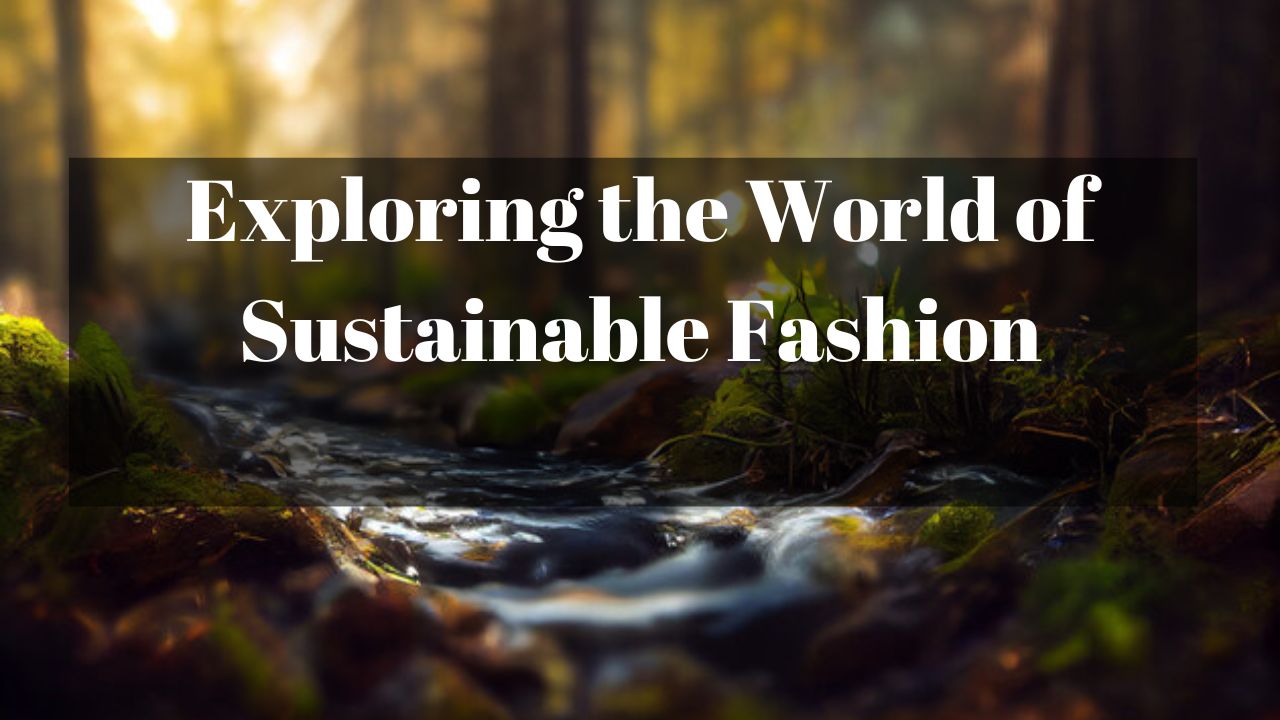Exploring the World of Sustainable Fashion
In recent years, the fashion industry has undergone a significant transformation, with sustainability taking center stage. As consumers become more conscious of the environmental and social impacts of their choices, the demand for sustainable fashion has surged.
This article delves into the world of sustainable fashion, exploring its key principles, innovations, and the positive impact it has on both the planet and the fashion industry.
Understanding Sustainable Fashion:
Sustainable fashion is an umbrella term that encompasses ethical practices, environmentally friendly materials, and fair labor conditions throughout the entire fashion supply chain. It aims to minimize the negative impact of the industry on the environment and society while promoting innovation and responsible consumerism.
Ethical Practices:
One of the pillars of sustainable fashion is ethical production. This involves ensuring fair wages, safe working conditions, and respecting the rights of workers involved in the manufacturing process. Ethical practices extend beyond production to encompass the entire supply chain, including sourcing raw materials and transportation.
Environmentally Friendly Materials:
Sustainable fashion promotes the use of eco-friendly materials such as organic cotton, hemp, bamboo, and recycled fibers. These materials reduce the environmental footprint of the fashion industry by minimizing water usage, eliminating harmful pesticides, and decreasing dependence on non-renewable resources.
Innovations in Sustainable Fashion:
Circular Fashion:
Circular fashion is a revolutionary concept that aims to create a closed-loop system, where products are designed with the intention of being recycled or repurposed at the end of their life cycle. This approach reduces waste and promotes a more sustainable consumption model.
Upcycling:
Upcycling involves transforming discarded materials or old garments into new, high-quality products. This creative approach not only minimizes waste but also adds a unique and personalized touch to fashion items.
Sustainable Design:
Sustainable design focuses on creating timeless, versatile pieces that withstand trends, encouraging consumers to invest in quality items that last longer. This approach challenges the fast fashion model, promoting a shift towards a more conscious and thoughtful wardrobe.
Positive Impact on the Fashion Industry:
Consumer Awareness:
As consumers become more informed about the environmental and social impacts of their choices, they are increasingly seeking sustainable alternatives. This shift in consumer behavior is pushing fashion brands to adopt more responsible practices, leading to a positive transformation within the industry.
Innovation and Collaboration:
Sustainable fashion has spurred innovation, encouraging designers and brands to explore new materials, production techniques, and business models. Collaborations between fashion and technology sectors have resulted in groundbreaking advancements, such as sustainable fabrics made from agricultural waste and 3D printing of garments.
Corporate Responsibility:
Major fashion brands are recognizing the importance of corporate responsibility and are integrating sustainable practices into their business models. This includes setting goals for reducing carbon emissions, eliminating single-use plastics, and ensuring ethical labor practices across their supply chains.
Challenges and Future Outlook:
While sustainable fashion has made significant strides, challenges remain. The industry faces hurdles such as scalability, consumer education, and the need for more widespread adoption of sustainable practices. However, the future looks promising as technology, consumer awareness, and industry collaboration continue to drive positive change.
Conclusion:
Exploring the world of sustainable fashion unveils a dynamic and evolving landscape that goes beyond aesthetics. It represents a commitment to ethical practices, environmentally conscious choices, and a shift towards a circular and responsible fashion economy.
As consumers increasingly prioritize sustainability, the fashion industry has a unique opportunity to embrace innovation and shape a more sustainable and stylish future.











